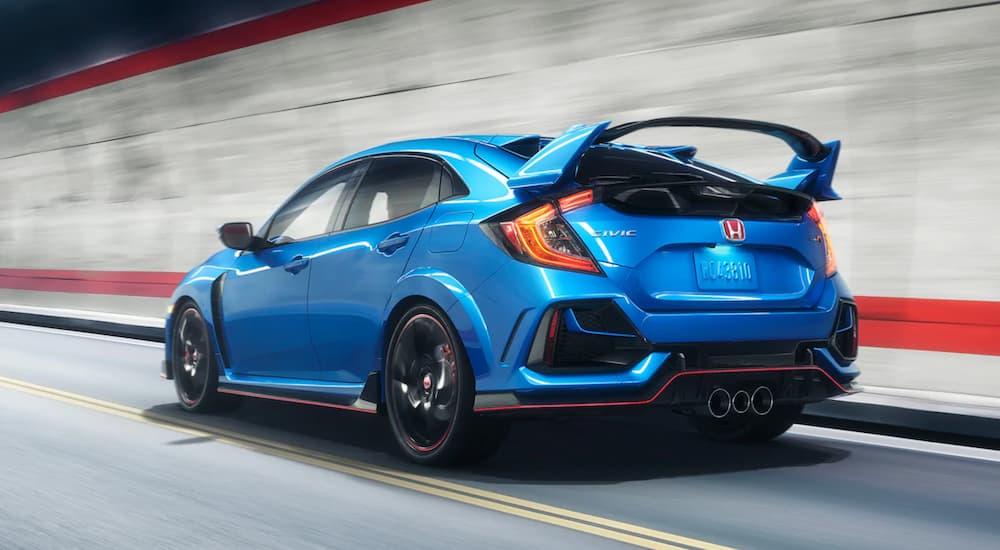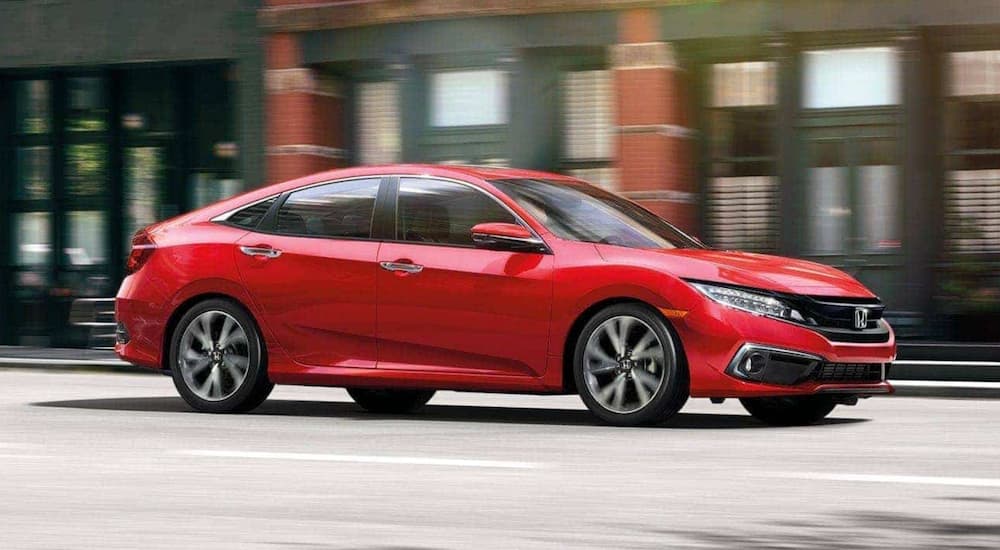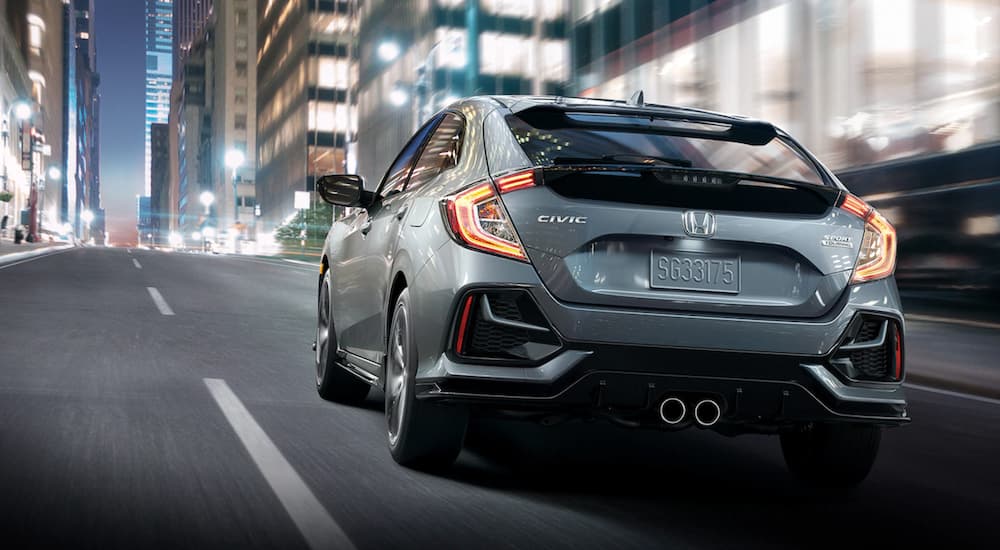From commuters to avid road-trippers to drivers on a budget who want a car that’s affordable but doesn’t feel cheap, there are all kinds of people who love the Honda Civic. Since this compact sedan has been around for a while, it’s easy to find a used Honda Civic for sale and get an even better price.
If you want to get that deal without sacrificing too much in the way of tech features and fuel economy, it’s a good idea to look at the generation that came right before the current one. Once a new generation comes out, the old one can immediately become passé in the minds of dealers and trendy shoppers, but that doesn’t mean it suddenly stops being a solid car with features that are still must-haves for modern drivers.
The Civic moved to the eleventh generation in the 2022 model year, so we’re going to take one step back and look at the tenth-gen Civic. This generation started in the 2016 model year and continued into the 2021 model year. Let’s dive in and see what the highlights of this generation are, what big changes were made within the time frame, and what all that those Civics produced then have to offer drivers today.
Efficient Powertrains
If you’re looking for above-average fuel economy, it’s almost impossible to go wrong with a tenth-generation Civic. According to the EPA, the average 2024 vehicle gets 28 MPG combined. The only tenth-gen Civic that doesn’t surpass that benchmark is the performance-oriented Type R, a model that most everyday drivers don’t even need to have on their radar. Putting that aside, you can expect to get at least 30 MPG combined, no matter what configuration you find.
If you want to maximize fuel economy, look for the 1.5L turbocharged engine rather than the 2.0L engine and go against what used to be common wisdom by choosing the automatic transmission over the manual. With the right configuration, you can get a 2016 Honda Civic that gets as much as 31 MPG in the city and 42 MPG on the highway (for 35 MPG combined)—plenty efficient even compared to modern vehicles.
Variety of Body Styles
In addition to multiple engine options, the Civic also has multiple body styles for you to choose from. For the 2016 lineup, there was a four-door sedan and a two-door coupe. Both of these models have a sealed trunk in the back that’s lockable, private, and separate from the passenger area of the cabin, making it so cargo can’t go flying during a sudden stop. But if you want a more open cargo area that lets you store bulkier items like furniture, you’ll want to consider the hatchback, which joined the tenth-gen lineup for the 2017 model year. The coupe hung around for most of the generation’s run but was discontinued in the eleventh hour, not returning to the lineup for the 2021 model year.
Cargo and passengers are the main considerations worth keeping in mind when deciding between the coupe, sedan, and hatchback. The two-door coupe is sporty but not as convenient if you often have backseat passengers, for instance. The different body shapes do affect fuel economy, but not by much. Looking at the 2017 model year, when paired with the 1.5L turbo engine and an automatic transmission with variable gear ratios, the Civic hatchback gets 34 MPG combined, the coupe gets 35 MPG combined, and the sedan leads the pack with 36 MPG combined.
Top Safety Tech
Safety features have certainly come a long way in recent years, so it’s worth taking a close look at safety when considering a used car. When it comes to basic safety, the tenth-gen Civic has a solid record. While the last model year of the outgoing ninth generation was named a Top Safety Pick by the Insurance Institute for Highway Safety, the first model year of the tenth generation boosted that rating up to the even more prestigious Top Safety Pick+ designation, getting a “good” score for crashworthiness in every category, from front and side to roof strength and head restraints.
The tenth-generation Civic also features the Honda Sensing suite of driver assistance technology. For the 2016 model year, these features (including automatic emergency braking, lane keep assist, and adaptive cruise control) were available across all trim levels but only standard on the top-tier Touring. In the 2019 model year, the Honda Sensing suite became standard across all trims for the Civic coupe, sedan, and hatchback.
Cabin Convenience
In the early years of the tenth-generation Civic, some reviewers actually preferred trims that came with the less-advanced push-button infotainment system over those that came with the seven-inch touchscreen. While the screen allows for Apple CarPlay and Android Auto connectivity, it doesn’t feature any physical buttons or knobs, which are easier to use while driving and keeping your eyes on the road.
The screen itself was also known for being less than lightning quick, with menu layouts that weren’t especially straightforward (though the latter issue isn’t a problem when working within the interface of either Apple CarPlay or Android Auto). A mid-generation refresh for the 2019 model year improved things, adding a physical volume knob to the touchscreen system along with several other proper buttons, making it easier to work the system via muscle memory.
Upscale Aesthetics
The Civic has been an affordable choice for drivers, and while it doesn’t cut corners when it comes to reliability and efficiency, it’s not always known for going the extra mile to look stylish or feel upscale. The ninth generation, for instance, was criticized for having a cheap-feeling interior and a cabin that could get pretty noisy, especially at highway speeds. The tenth generation addressed these concerns, providing an all-around more comfortable ride for drivers and passengers alike.
Thanks to an acoustic glass windshield, sound-absorbing materials, and triple door sealing (among other advancements), vibration and noise in the cabin are greatly reduced compared to the previous generation. The interior is also crafted using better quality materials, giving it a better look throughout the cabin. The back seat also got some extra legroom, making the Civic better suited for long drives with more than two people on board.
Plenty of Choices, Plenty to Love
The tenth-gen Civic encapsulates a lot of the qualities and features that have drawn drivers to this model for decades. First and foremost, it’s a reliable and efficient car. As a popular choice for commuters, the Civic doesn’t mess around when it comes to delivering a solid bang for every buck spent on gasoline and being built to last for the long haul without requiring too many extra trips to the mechanic. It also provides a comfortable driving experience, which is important for drivers who spend a significant amount of time on the road day in and day out.
Beyond that, the tenth-gen Civic also gives drivers a lot of choices. Whether you want a sedan, a coupe, a hatchback, or even a performance-oriented model like the Civic Si or powerful Type R, there’s something for you in this generation. Driver assistance is an available option on every single trim—not something that was especially common at the time the generation debuted—and there are two efficient engines to choose from. All of these options might make finding the configuration you like best a bit complex when shopping used, but you can rest assured that it will be worth the wait when you find it.






